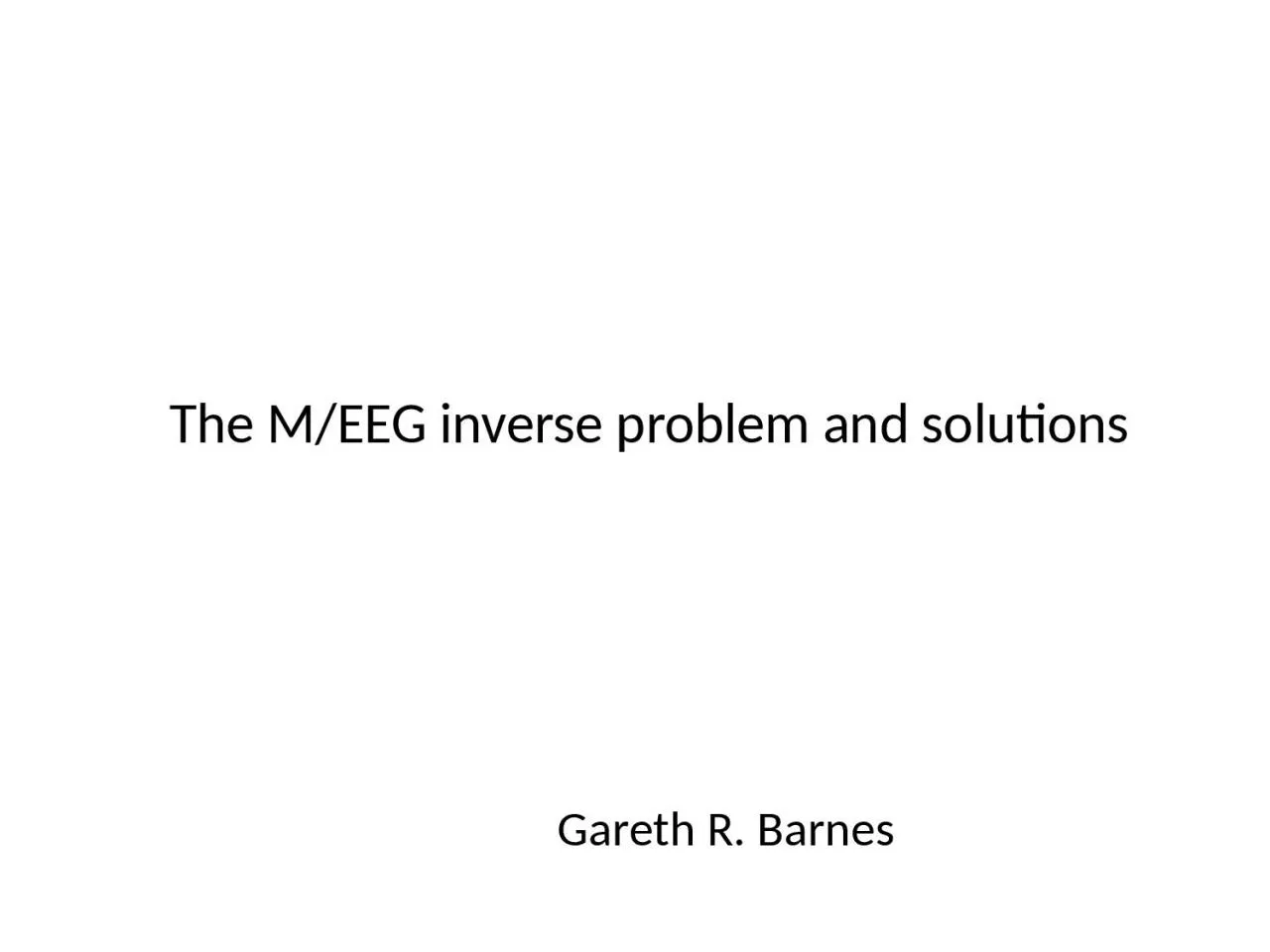

Gareth R Barnes Format The inverse problem Choice of prior knowledge in some popular algorithms Why the solution is important Volume currents Magnetic field Electrical potential difference EEG ID: 1034353
Download Presentation The PPT/PDF document "The M/EEG inverse problem and solutions" is the property of its rightful owner. Permission is granted to download and print the materials on this web site for personal, non-commercial use only, and to display it on your personal computer provided you do not modify the materials and that you retain all copyright notices contained in the materials. By downloading content from our website, you accept the terms of this agreement.
1. The M/EEG inverse problem and solutionsGareth R. Barnes
2. FormatThe inverse problemChoice of prior knowledge in some popular algorithmsWhy the solution is important.
3. Volume currentsMagnetic fieldElectrical potential difference (EEG)5-10nAmAggregate post-synaptic potentials of ~10,000 pyrammidal neuronscortexskullscalpMEG pick-up coil
4. Inverse problem1sActivePassive Local field potential (LFP)MEG measurement1nAm1pTpick-up coilsWhat we’ve gotWhat we wantForward problem
5.
6. Useful priors cinema audiencesThings further from the camera appear smallerPeople are about the same sizePlanes are much bigger than people
7. Where does the data come from ?1pT1s
8. Useful priors for MEG analysisAt any given time only a small number of sources are active. (dipole fitting)All sources are active but overall their energy is minimized. (Minimum norm)As above but there are also no correlations between distant sources (Beamformers)
9. The source covariance matrixSource numberSource number
10. Estimated dataEstimated positionMeasured dataDipole Fitting?
11. Estimated data/Channel covariance matrixMeasured data/Channel covarianceDipole fittingTrue source covariancePrior source covariance
12. Fisher et al. 2004Dipole fittingEffective at modelling short (<200ms) latency evoked responsesClinically very useful: Pre-surgical mapping of sensory /motor cortex ( Ganslandt et al 1999)Need to specify number of dipoles (but see Kiebel et al. 2007), non-linear minimization becomes unstable for more sources.
13. Minimum norm- allow all sources to be active, but keep energy to a minimumSolutionPriorTrue(Single Dipole)
14. Problem is that superficial elements have much larger lead fieldsMEG sensitivityBasic Minimum norm solutionsSolutions are diffuse and have superficial bias (where source power can be smallest). But unlike dipole fit, no need to specify the number of sources in advance.Can we extend the assumption set ?
15. CoherenceDistance0 12 24 30mm8-13Hz band0 0.5 1.0 Cortical oscillations have local domainsBullock et al. 1989“We have managed to check the alpha band rhythm with intra-cerebral electrodes in the occipital-parietal cortex; in regions which are practically adjacent and almost congruent one finds a variety of alpha rhythms, some are blocked by opening and closing the eyes, some are not, some respond in some way to mental activity, some do not.” Grey Walter 1964 Leopold et al. 2003.
16. Beamformer: if you assume no correlations between sources, can calculate a prior covariance matrix from the dataTruePrior,Estimated From data
17. Singh et al. 2002MEG compositefMRIOscillatory changes are co-located with haemodynamic changesBeamformersRobust localisation of induced changes, not so good at evoked responses.Excellent noise immunity.Clincally also very useful (Hirata et al. 2004; Gaetz et al. 2007)But what happens if there are correlatedsources ?
18. Beamformer for correlated sourcesPrior(estimated from data)True Sources
19. Estimated data/Channel covariance matrixMeasured data/Channel covarianceDipole fittingTrue source covariancePrior source covariance?
20. Multiple Sparse Priors (MSP)el1el2eln +Estimated (based on data)TrueP(l)lPriors(Covariance estimates are made in channel space)= sensitivity (lead field matrix)-4
21. AccuracyFree EnergyCompexity
22. Can use model evidence to choose between solutions Free energy
23. So it is possible,but why bother ?
24. Correct inversion algorithmCorrect location informationCorrect unmixing of sensor data = best estimate of source level time seriesHigher SNR (~ sqrt (Nchans))Single trial dataStimulus(3cpd,1.5º) Duncan et al . 2010
25. ConclusionMEG inverse problem can be solved.. If you have some prior knowledge.All prior knowledge encapsulated in a source covariance matrixCan test between priors in a Bayesian framework.Exciting part is the millisecond temporal resolution we can now exploit.
26. Thanks toVladimir LitvakWill PennyJeremie MattoutGuillaume FlandinTim BehrensKarl Friston and methods group